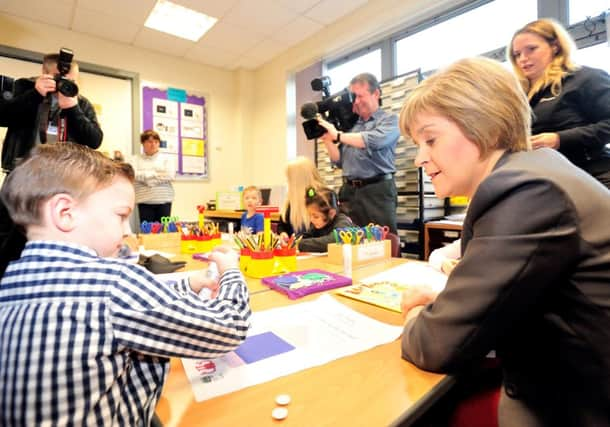Leaders: Lessons in London for Scotland’s schools


First Minister Nicola Sturgeon flagged her intention to address this gap earlier this month when she unveiled plans for a new Attainment Scotland Fund. It will provide £100 million of investment over four years.
Boldly, she is looking to successful schools in London to see where lessons can be learnt. That is a major breakthrough for a mindset that for decades has rested on the past glories of Scottish education. What had we possibly to learn from other countries, and from England in particular?
Advertisement
Hide AdAdvertisement
Hide AdBut problems we have, and we need to learn from the success of schools in other deprived areas of the country to see whether these approaches can be successfully transplanted into the Scottish system.
To this end she is travelling to London to find out about a particularly impressive ground-breaking project. She is due to visit Blue Gate Fields junior school in London’s Tower Hamlets district. Ofsted inspectors recently rated the school as “outstanding” and this is also reflected in the good performance of the pupils there.
It took part in the London Challenge, introduced south of the Border in 2003 by the then Labour government with the aim of giving young people a better education. The school is now ranked in the top 20 per cent of schools in England for attainment in grammar and reading and in the top 40 per cent for maths.
Although the London Challenge directly inspired the Attainment Scotland Fund, Ms Sturgeon’s willingness to embrace ideas from outwith Scotland come with predictable caveats: that she has “no time for some of the ideological reforms taking place in English education.”
Nevertheless, she concedes that “there are clear lessons for Scotland from the London Challenge and the efforts made to improve attainment” and that “we should be open to ideas from other parts of the UK and elsewhere to help tackle the challenges we face.”
While the administration continues to extol the virtues of the Curriculum for Excellence, the difficulty in measuring improvement continues to cast doubt on how effective it is really proving. And would her predecessor Alex Salmond have made a similar visit to a London school?
Many will see in her visit today a clear sign of a different and more open approach. It is one wholly to be welcomed for the example it sets: if reforms can work in a challenged and disadvantaged area such as Tower Hamlets, it should surely inspire similar endeavour here.
Confidence tempered by hard lesson
It could be hailed as the first sign of the return of the Feel Good Factor: consumer confidence in spending is recovering after years of pinched budgets.
Advertisement
Hide AdAdvertisement
Hide AdA study by Lloyds Bank finds that household confidence in spending has risen to its highest point in four years. The bank’s monthly Spending Power report finds that people are forking out almost one per cent less on essentials than they were a year ago.
But a spending and borrowing bonanza? Hardly. More than half those surveyed said that they had cut back on spending since the start of January after Christmas, and one in four are using a discount supermarket.
There’s little doubt that the surprising strength in overall employment coupled with the effects of lower energy prices and a low inflation rate have helped to improve the budgets of millions of households. But after years of cutbacks it would be truly remarkable if this were not the case by now. Many households are still deep in debt. And there is a notable mood of caution about the evidence of improvement in spending power.
Memories are still raw of the recession and the long period of stagnation before there was any real sign of recovery.
And despite recent signs that we may be in for a period of falling prices, many are apprehensive about how long the era of ultra-low interest rates – and mortgage costs – will last.
It is heartening that spending confidence is returning. But perhaps the news that gives the greater reassurance is that we remain keenly aware of how long it has taken to recover to this point – and that borrowing must never again get out of hand.
FOLLOW US
SCOTSMAN TABLET AND MOBILE APPS